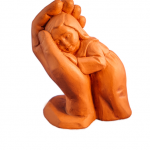These 200 autism tips are intended to provide practical strategies, approaches, ideas and sometimes comfort. They are relevant to both children and adults. You can read one a day or read a few in a group. These are autism tips taken from working with families and professionals and they originally appeared on Living Autism’s Twitter and Facebook in 2016.
Autism Tips 1 to 20
- Look back over the past 12 months. Record what worked well and what made a difference for you and the person with autism.
- List positive interactions you have had and reflect on why these interventions successful. Can you do more of this?
- Can you further develop successful interactions so this time next year you have even more to write about and celebrate?
- Leaving the past behind can be very difficult and we are all tempted to hold onto failures and dwell on what hasn’t worked.
- When we are in a negative cycle we will try fewer new approaches. Negative cycles drain our confidence and creativity.
- Confidence and creativity are essential for supporting people with autism.
- Start with the question “What does the answer or the solution to the present problem look like?”
- Make a sign or certificate to celebrate your successes. Put is within easy sight to look at when things are difficult.
- Make a celebratory certificate that, eg I am 97% successful as a parent/professional and difficult times are only 3%.
- Encourage your child to use a digital camera to photograph their world starting with the home and moving outwards.
- Photographs taken by the person with autism help show what is important to them.
- Photographs taken by the person with autism provide a useful insight into their sensory experiences.
- Learn to benefit from your child’s autism wisdom. Jot down their thoughts and share them with us and others.
- Learn not only from what a child with autism says but also from how they respond to situations.
- Learn to understand your child’s non-verbal communication and respond to it. Keep a diary of expressions.
- Most of us carry around baggage that stops us getting very far. Identify your own baggage.
- When you have identified your own baggage try to hold onto what works and ditch the baggage.
- Keep difficult/distressed behaviour in perspective. Try to stop it dominating your thinking (individual/organisation).
- The way we speak about behaviour that challenges often reflects how we feel about it.
- Change the language you use re behaviour that challenges. It could result in a better feeling + more positive outcomes.
Autism Tips 21 to 40
- Remember you have more in common with a person with autism than not, so concentrate on the commonalities.
- If you only concentrate on the differences between you and a person with autism the walls will become higher.
- If you concentrate on similarities between you and a person with autism you will have more empathy for them.
- Learning to observe, listen and reflect is often the key to understanding and better supporting the person with autism.
- A barrier to communication for individuals with autism is others do not understand how they prefer to communicate.
- Often people do not put in the effort needed to communicate with people with autism in a way they need.
- For many children with autism communication is about keeping it short, personal, relevant and precise
- Relevant and precise communication benefits both the child with autism and those working with them.
- Communication with a person with autism is a two-way dynamic process for the benefit of both parties.
- Identify and celebrate the smallest of successes with a person with autism.
- Success should always be individually defined for the child with autism and not based on other children.
- Success for a child with autism cannot be defined by what we think they should be attaining.
- Most children with autism learn not through their failures but through their successes which you can help identify.
- Look for where a child with autism is in terms of age appropriateness, abilities, skills and understanding. Start there.
- If you stand alongside the child with autism you will be able to enjoy the moment with them.
- If you stand with those who are far in front of the child with autism in their progress you can miss wonderful things.
- The key to motivating children with autism is to make it worth their while from their point of view.
- Make a list of what made your child happy this week.
- Can you replicate what made your child happy on a regular basis?
- Sometimes what creates happiness can be out of our hands, eg the No7 bus passing the house on time.
Autism Tips 41 to 60
- It’s worth remembering that for most parents what makes their child happy will also make them happy.
- Don’t present choices when there are none to make. To a literal mind this is most confusing.
- Avoid questions that are really requests, eg “Would you like to pass me a drink” or “Would you like to go to school?”
- Do not say things you can’t impose, eg “If you do not stop flushing the toilet, you will not be able to go again”.
- Sometimes you need to do things to get through the day. Do this without self-blame or justifying it to others.
- Try to constantly develop your ability to see the communication behind the behaviours that challenge us.
- Ensure that activities make sense and have a reason for the person with autism.
- Do not refer to the child with autism by their behaviour.
- Keep behaviour that challenges in perspective. Sometimes we can allow it to overtake our thinking.
- Make a list of all your child’s strengths and abilities and put it somewhere you and others can see it.
- A list of your child’s strengths and abilities will help keep you positive when others are telling you what they can’t do.
- Meeting the sensory needs of people with autism is more than about having the right equipment.
- Meeting the sensory needs of people with autism is more about having the right insight and understanding.
- When supporting a person with autism sometimes we have to trust our instincts.
- We are all often under too much pressure to constantly do things with the individual with autism.
- A lot of the time a person with autism just wants us to be there with a catalogue or whatever makes them happy.
- Parents and professionals can self-harm by blaming themselves for things they have little control over autism.
- Every child with autism can learn and develop. We just have to make sure we are teaching them the right things.
- When driven to distraction by your child’s special interests remind yourself they are functional and help to get them through the day.
- Observe your child’s interests and identify what they achieve. This will help you decide whether to address these behaviours.
Autism Tips 61 to 80
- When providing meaningful activities remember it should be what is meaningful to the child and not necessarily to us.
- When deciding whether to address behaviours be guided by principle of ‘right time, right place, right response’.
- If behaviour is at the right time/place and is the right response, then we usually don’t need to do anything.
- When prioritising behaviours work on those that will increase happiness, wellbeing, and will help access what life has to offer
- Make your own top tips for communicating with your child and share them with those who support them.
- Here’s a tip to get you started in making communication fun – keep it simple and relevant.
- The level of communication will depend on what you’re communicating about and the child’s level of interest.
- Don’t bombard the child with questions. Make sure you really need to know what you’re asking.
- Learn when enough is enough and that too much of the best of things can be too much.
- There can be too much communication when it comes to tasks and tolerated things.
- Spend as much time identifying what makes the child happy as you do what upsets them.
- Take time to step back and reflect on goals and aims today.
- When communicating ask what are you trying to achieve and for who’s benefit.
- When communicating ask what has worked, what still might work, if there is anything you should leave behind.
- Take time to simply be with the person with autism today without feeling pressured to do anything.
- You may be surprised by how much you benefit from the experiencing just being with someone and not doing.
- Try to spend more time discussing solutions to difficulties faced by the person with autism than the difficulties.
- Put important information for supporting the person with autism on a keyring for example and never lists.
- Observe moments when the child/adult is calm. Keep a diary.
- Write down all the activities that make the child/adult calm.
Autism Tips 81 to 100
- Think of ways to maintain and extend moments of calm for the child/adult.
- Observe what might trigger moments of anxiety or distressed behaviour in the child/adult.
- If you notice something that might trigger distressed behaviour try to guide the child/adult away.
- Use subtle diversion from possible triggers to distressed behaviour such as doing a fun task.
- If you can remove a possible trigger to distressed behaviour, do so.
- Leave the old behind. Start with identifying what no longer works.
- Use non-literal language with care where appropriate providing visual or written examples.
- Less language is usually better for individuals with autism.
- Be specific. Talking around subjects can cause confusion.
- Don’t present complex and difficult tasks at times of high social demand.
- Provide high levels of support at times of unstructured interaction.
- Try to produce success in social situations by highlighting what went well and minimising failure.
- Learn the person’s preferred personal space.
- Discuss and explain other possible ways of behaving.
- Encourage the person with autism to become a problem solver.
- Remember the biggest transitions start with the smallest steps or even a look in the direction they will be going.
- Encourage the person with autism to become a problem solver.
- Remember that the anticipation of an unpleasant sensory experience can be as bad as the actual experience.
- Develop ‘what happens next’ games for the person with autism, these can be photographs or short videos.
- Flow charts can help with organising and planning ahead.
Autism Tips 101 to 120
- It is important that we not only help with recognising emotions but we emphasise the context they take place in.
- When supporting learning of any kind it’s important to start with the known and experienced if possible.
- When communicating with people with autism we need to make time and be committed to understanding.
- We need to remind ourselves that in autism what is seen is seldom the full picture.
- What is said may not be what is being communicated.
- Hearing the person with autism’s voice is little use if we don’t act upon it.
- Reflect on the person’s non-verbal communication: what does happy, excited, content look like?
- Make a list of activities that maintain calmness.
- Make a list of activities that help create alertness.
- What does calm/alert look and sound like for the person you support?
- If your child is going through puberty remember one aim is to achieve consistency in a time of change.
- Remember the importance of checking out behaviours that may be based on incorrect knowledge and information.
- Think about the avenues open for you to learn about ‘social’ – can these be available for the person with autism.
- Ensure that the person has the right vocabulary for their life stage.
- Try to identify the subtle signs that stress levels are rising.
- Gently challenge misconceptions of self eg “I can’t do anything right”.
- At times of greater stress and anxiety reinforce known routines and structures.
- Learn to recognise how we respond to stress and anxiety so we can avoid passing it on to those we support.
- Try encouraging thought replacement such has thinking of a happy place.
- Self-awareness is key to self-management; if you don’t know self how can you behave yourself?
Autism Tips 121 to 140
- When supporting with self-awareness start with the physical self before moving on to emotions and feelings.
- Ensure that the person with autism has a vocabulary for talking about self.
- If teaching about relationships start with those closest to the person with autism and emphasise the positives.
- It can be a mistake to try to stop a behaviour we find challenging without addressing the reasons it started in the first place.
- The way your child responds to sensory input may be different to yours. It doesn’t mean it’s less valid.
- Try to identify what makes your child’s life meaningful and try to provide this with what makes them happy.
- Remember if the child with autism doesn’t join in it could be they don’t know how to not they don’t want to.
- Ensure that the child has a way of indicating that they can’t cope before the world gets too loud too bright or too frightening.
- Remember to remind the person with autism what we want them to look.
- When you ask a person with autism to look, they may be focusing on something much more interesting for them.
- Try to give warning of touch, it’s easy to forget when we’re desperate to comfort.
- Ensure that the child has an alternative to their present behaviour.
- Support for many with autism needs to be consistent, flexible and creative.
- Sometimes the best and all we can give is time to listen to the person with autism.
- If your child is a little noisy try the following apps. Class monster and voice meter.
- Think of using voice apps to teach class, corridor, playground, bedroom or lounge voice.
- Explore visual ways of exploring words the person finds most difficult, eg under.
- Make a list of the special interests, at the side of each one identify how it could be used to motivate.
- Try putting rubber on the end of chair legs to reduce noise.
- Some children and adults with autism learn best by touch eg feeling shapes of letters.
Autism Tips 141 to 160
- A parent said their child enjoyed watching TV with captions to help his understanding.
- When important changes are expected ensure that key people are all involved in preparing the person.
- List individual elements of approaches that worked, even if the whole approach hasn’t.
- Use the list of successful interactions to develop an individual approach for the child.
- If your child is not responding to choices offered ensure that they are not too abstract or out of their experience.
- Some children find objects in the environment more interesting than us. Get to know the completion so we can become more interesting than that chair.
- Remember that even the best and most effective routines may stop working for a short time, sometimes it is worth sticking with them.
- Model positive behaviour consistently and over time.
- Build in small breaks even in preferred activities.
- Teach specific rules for specific situations but build in the ‘Ah but we always do this, but in this situation we do this’.
- For some children we need to teach what ‘Finished’ looks like.
- Have photographs of what finished looks like for key tasks.
- Find ways of helping your child explain things from their point of view.
- Give tips for progressing conversation to prevent getting stuck on that special subject.
- If teaching a new word or phrase remember that context is all important.
- If teaching new behaviours or reinforcing appropriate ones remember that context is all important.
- Use simple drawings to promote and develop conversations.
- Celebrate the child’s best efforts at communication even when they’re not just right.
- Remember what seems a very irrational response to us can be totally rational to the child with autism.
- Remember that independence starts with doing something very small for a very short time.
Autism Tips 161 to 180
- In creating autism friendly places try to reduce negative sensory effects and enhance positive ones.
- Remember different colours vibrate at different rates and can affect the individual.
- With sleep problems, a possible strategy is to try to have total darkness during times of sleep.
- It is important to remember that autism is a label and not a description that your child will conform to.
- Meal times can be a night mare for children with autism due to the sensory and social aspect.
- A quick fix for mealtimes can be to ensure children have the most appropriate utensils to meet their needs.
- Encourage your child to help lay the table talking through the function of each item can help with understanding their use.
- Some children with autism may not register food on their faces using a mirror can be helpful in locating the paces food is likely to be.
- Meal times can be a good time to teach the important concept of beginning middle and end.
- Surround yourself with those who have the ability and desire to help you find solutions when all you can see are the difficulties.
- Remember to check out other family members understanding of autism. You may be surprised what you discover.
- When reading about the need to emphasise happiness for those with autism remember it applies to those around them as well.
- Make rules simple and positively stated.
- Remember that eating a slice of bread may start with a crumb for some children with autism.
- I often find trying something new often in proportion to my commitment to it.
- A starting point for behaviour change is knowing what we don’t need to change.
- Now is a good time to take a step back and identify your child’s success so far this year.
- Now is a good time to look back and count your own success so far this year.
- When teaching a social skill be clear and work from the known towards the unknown.
- When teaching a social skill teach right time and place.
Autism Tips 181 to 200
- Imitating and following your child can be the beginning of an enlightening journey.
- As the child with autism grows and develops we need to evaluate and update the way we support them.
- When taking your child on holiday try to check out where the safe low arousal places are located.
- Remember that going to the same place at a different time of day or year is still a change for the person with autism.
- Use rehearsal and pretend play to prepare for a holiday.
- Involving the child in packing the suitcase can help reduce anxiety.
- Holidays are often about how we remember them, make a short presentation to share these.
- Prepare your child for being patted down at airport security.
- Checkout any special support the airport may have put in place for children with autism.
- Have a count-down story for the coming holiday on Monday we ….etc
- In the summer holidays remember to plan in recovery days / periods for your child.
- Use power cards to help prepare for a change of schools.
- Try to establish how long before bedtime to end physical activities.
- Sleep difficulties. Establish good bedtime routines reinforced with visual schedules.
- Sometimes we need to put aside our own goals for the child and just go with theirs.
- Ensure that praise outweighs comments as to what didn’t go well.
- For the child with autism breaks and opportunities to self regulate are often more important than engaging.
- If a child repeatedly fails to achieve ask if we’re asking them to do the right thing?
- If struggling finding what works for you and your child remember to revisit past approaches as they may work now.
- People often say we need to think outside the box. Try not to be in the box in the first place.
If you would like to know more about the work that Geoff Evans does with families and professionals, contact him at geoffaut@hotmail.com













